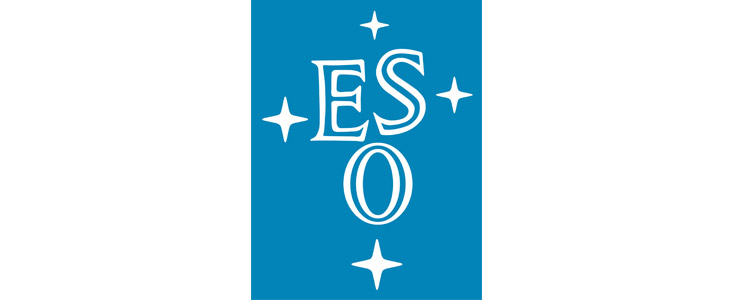Pressemitteilung
Life in the Universe
Is there anybody out there?
2. Juli 2001
The Universe is indescribably huge. Can it be possible that Humanity is the only form of intelligent life which exists in all this immensity? Are we really alone? Throughout history there have been sightings of creatures from elsewhere. Science fiction novels and films with flying saucers and bizarre looking aliens are part of our general culture. Perhaps the Earth is really only an experiment designed by mice and soon we will all be destroyed to make way for a new interstellar highway! The possibility that there is life in the Universe has always excited the general public and scientists are equally enthusiastic. Physicists, biologists, chemists, cosmologists, astronomers are researching all over Europe to try to answer this age-old question: Is there life in the Universe?
Our current understanding
What is our understanding at the beginning of the 21st century? Is there any scientific evidence for other forms of life? How can you define life? What signs are they looking for? What would the reaction be if other forms of life were discovered?
The European Organisation for Nuclear Research (CERN), the European Space Agency (ESA) and the European Southern Observatory (ESO), in cooperation with the European Association for Astronomy Education (EAAE) have organised a competition to find out what the young people in Europe think. The European Molecular Biology Laboratory (EMBL) and the European Synchrotron Radiation Facility (ESRF) are also associated with the programme.
The "Life in the Universe" programme
The "Life in the Universe" programme is being mounted in collaboration with the research directorate of the European Commission for the "European Week of Science and Technology" in November 2001.
Competitions are already underway in 23 European countries [2] to find the best projects from school students between 14 and 18. The projects can be scientific or a piece of art, a theatrical performance, poetry or even a musical performance. The only restriction is that the final work must be based on scientific evidence.
Two winning teams from each country will be invited to a final event at CERN's headquarters, in Geneva on 8-11 November, 2001 to present their projects to a panel of International Experts at a special three day event devoted to understanding the possibility of other life forms existing in our Universe. This final event will be broadcast all over the world via the Internet.
The website
The home base of the 'Life in the Universe" project is a vibrant web space where details of the programme can be found. It is still under development but already has a wealth of information and links to the national websites, where all entries are posted.
Is there other life in the Universe? We do not know - but the search is on!
To find out what is happening for "Life in the Universe" in each country, contact the National Steering Committees!
Endnoten
[1] This is a joint Press Release by the European Organization for Nuclear Research (CERN) , the European Space Agency (ESA) and the European Southern Observatory (ESO). These European intergovernmental research organisations organised the highly successful Physics On Stage programme during the European Week of Science and Technology in 2000.
[2] The 23 countries are Austria, Belgium, Bulgaria, Czechia, Denmark, Finland, France, Germany, Greece, Hungary, Ireland, Italy, Luxembourg, the Netherlands, Norway, Poland, Portugal, the Slovak Republic, Spain, Sweden, Switzerland, United Kingdom.
Weitere Informationen
CERN, the European Organization for Nuclear Research, has its headquarters in Geneva. At present, its Member States are Austria, Belgium, Bulgaria, Czechia, Denmark, Estonia, Finland, France, Germany, Greece, Hungary, Italy, Netherlands, Norway, Poland, Portugal, the Slovak Republic, Spain, Sweden, Switzerland and the United Kingdom. Israel, Japan, the Russian Federation, the United States of America, Turkey, the European Commission and UNESCO have observer status.
The European Space Agency (ESA) is an international/intergovernmental organisation made of 15 member states: Austria, Belgium, Denmark, Finland, France, Germany, Ireland, Italy, Netherlands, Norway, Portugal, Spain, Sweden, Switzerland, and the United Kingdom. ESA provides and promotes, for peaceful purposes only, cooperation among its member states in space research, technology and their applications. With ESA, Europe shapes and shares space for people, companies and the scientific community.
The European Southern Observatory (ESO) is an intergovernmental organisation supported by Belgium, Denmark, France, Germany, Italy, the Netherlands, Portugal, Sweden and Switzerland. ESO is a major driving force in European astronomy, performing tasks that are beyond the capabilities of the individual member countries. The ESO La Silla Observatory (Chile) is one of the largest and best-equipped in the world. Of ESO's Very Large Telescope Array (VLT) at Cerro Paranal (Chile), the four 8.2-m telescopes, ANTU, KUEYEN, MELIPAL and YEPUN are already in operation; the VLT Interferometer (VLTI) follows next.
Links
The home base of the 'Life in the Universe" project is a vibrant web space.
Kontaktinformationen
Monica de Pasquale (Executive Coordinator)
CERN
Geneva, Switzerland
Tel: +41-22-7677794
E-Mail: monica.de.pasquale@cern.ch
Über die Pressemitteilung
| Pressemitteilung Nr.: | eso0126 |
| Legacy ID: | PR 16/01 |
| Name: | Education |
| Typ: | Unspecified : People : Other/General |
| Facility: | Other |


